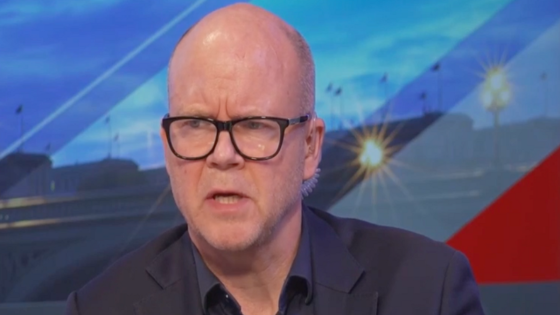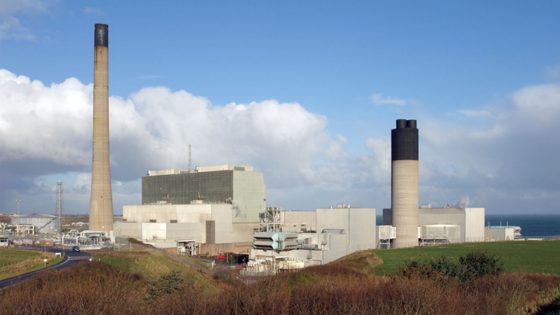Due to a reporting error, an earlier version of this story misidentified Jared Wheatley as a member of the Eastern Band of Cherokee Indians. Wheatley is a citizen of the Cherokee Nation.
The highest peak in the Great Smoky Mountains National Park is no longer named after a Confederate general.
Following lobbying from the Eastern Band of Cherokee Indians, the U.S. Board of Geographic Names unanimously voted Sept. 18 to restore Kuwohi as the mountain’s name.
Kuwohi, which translates to “mulberry place” in Cherokee, replaces Clingmans Dome, a name that honored Thomas Clingman, an expelled U.S. senator-turned-Confederate brigadier general who, as a lawyer, defended settlers’ claims on Cherokee land. Clingman is buried in Riverside Cemetery in Asheville.
“The Great Smoky National Park team was proud to support this effort to officially restore the mountain and to recognize its importance to the Cherokee People,” said Superintendent Cassius Cash in a statement. “The Cherokee People have had strong connections to Kuwohi and the surrounding area, long before the land became a national park.”
A spokesperson for the National Park Service told the Citizen Times Sept. 19 that staff are already working to update signage, websites and other materials with the Kuwohi name.
Restoration, healing but not forgiveness
The Cherokee people have always called the 6,643-foot mountain straddling the North Carolina-Tennessee border Kuwohi and have long considered it a sacred place. The peak is visible from the Qualla Boundary, where the EBCI is located and bordering the Smoky Mountains in Swain, Graham and Haywood counites. It’s the highest point within the traditional Cherokee homeland, according to the National Park Service.

In January, EBCI Principal Chief Michell Hicks submitted a proposal to restore the mountain’s Cherokee name, which is pronounced “ku-whoa-hee.” The proposal followed an effort started by two EBCI members Lavita Hill and Mary Crowe in 2022.
In a Sept. 19 phone interview with the Citizen Times, Hill said the name restoration is “an opportunity to educate anyone that hears the name ‘Kuwohi’ that this was indeed tribal land, and that people lived here, they had a native language, and they had names for places that meant something.”
“And we’ve been able to take that back,” she said.
In the lead up to the name restoration, local governments also voiced support. In 2022, the Buncombe County Board of Commissioners approved a resolution in support of restoring the traditional name, the Citizen Times previously reported. Asheville City Council also backed the effort.
Jared Wheatley, an Asheville business owner and citizen of the Cherokee Nation, told the Board of Commissioners before its 2022 vote that support for the restoration of the peak’s Cherokee name went beyond “just a signal.”
“It also speaks to recognizing the community that still exists in Western North Carolina and always will,” Wheatley said.
In a phone interview Sept. 19, Wheatley, who founded the Indigenous Walls Project, an indigenous language and culture mural project, told the Citizen Times the name restoration is a historic moment for all three nations of the Cherokee people.
“Our people are the only people who have been in true relationship with this land,” Wheatley said. “By restoring the language, you’re helping heal the indigenous relationship with the natural environment.”
But the effort doesn’t stop with Kuwohi, he said.
Wheatley, who also serves on the City of Asheville’s Planning and Zoning Commission, said the commission recently adopted a land acknowledgement recognizing the area’s original indigenous inhabitants.
It reads, in part: “We occupy the Land of the Cherokee people, who have stewarded and been in relationship with these mountains and waterways from time immemorial. This land is occupied through violence, oppression, coercion, broken treaties, and forced relocation.”
The commission will also soon begin working to add a land acknowledgement to the city’s comprehensive plan, Wheatley said, “to center an indigenous perspective of the land use and regulation of our city.”
Wheatley also said a group of elders are working together to provide input on the naming of Buncombe County’s first state park that five federally recognized tribal nations, including the EBCI, have ancestral connections to, according to the North Carolina Division of Parks and Recreation. The state completed the land acquisition for the park, now called Pisgah View State Park, last year and the park is expected to open in 2025.
But for Hill, she’s still trying to comprehend the magnitude of the Kuwohi name being restored.
Noting her own connection to the land, she said she feels inspired whenever she’s on the summit, where she reflects on what her ancestors had to endure hiding in these mountains to remain in their homeland. In 1838, federal troops forcibly removed thousands of Cherokee people on the Trail of Tears to Oklahoma, where that tribe is now known as the Cherokee Nation.
“If not for them, we would have moved out west with everyone else,” she said.
But with the Kuwhoi name restored, it’s no “peace offering,” she said. It’s an opportunity to educate, not forgive.
More: Thousands turn out for NC Cherokee recreational marijuana opening; hours modified
More: Eastern Band of Cherokee launches recreational, adult-use marijuana in NC; long lines form
Jacob Biba is the county watchdog reporter at the Asheville Citizen Times. Reach him at [email protected].
This article originally appeared on Asheville Citizen Times: Cherokee name for Great Smoky Mountains NP’sClingmans Dome restored
Source Agencies



